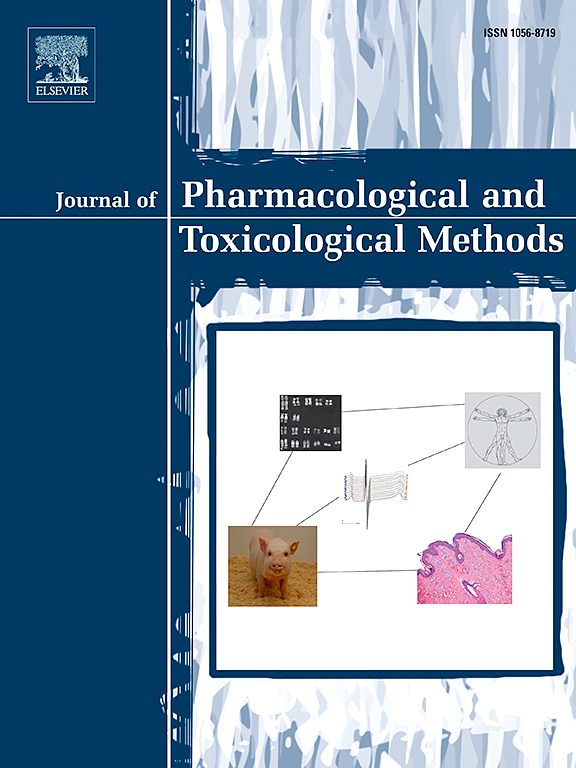Development and validation of a quantitative UHPLC-HRMS bioanalytical method for equine anti-doping control
IF 1.3
4区 医学
Q4 PHARMACOLOGY & PHARMACY
Journal of pharmacological and toxicological methods
Pub Date : 2025-05-22
DOI:10.1016/j.vascn.2025.107759
引用次数: 0
Abstract
The quantification of banned substances in equine antidoping control, especially in racehorse urine, necessitates robust analytical methods with high detection levels due to the extremely low concentrations of the target substances and the significant impact of minor variations on doping test results. Reliable quantification is important for substances near regulatory thresholds, which, if exceeded, are prohibited.
This study presents the development and validation of a bioanalytical UHPLC-HRMS method for quantifying doping substances in equine urine, including diazepam and acepromazine with a regulatory limit level of 10 ng.mL−1 (validated at 6, 8, 10, 12, and 14 ng.mL−1); ketoprofen, flunixin, and caffeine with a permissible limit of 100 ng.mL−1 (validated at 60, 80, 100, 120, and 140 ng.mL−1); and meloxicam and lidocaine with a detection threshold of 25 ng.mL−1 (validated at 15, 20, 25, 30, and 35 ng.mL−1) using the accuracy profile. Different β values were applied to determine the proportion of future measurements that will fall within predefined acceptance limits, set at ±30 % (for a biological matrix). Method validation was carefully carried out and rigorously demonstrated in compliance with the French Society of Pharmaceutical Sciences and Techniques (SFSTP) commission in compliance with the ISO 17025 standard.
马反兴奋剂定量UHPLC-HRMS生物分析方法的建立与验证。
马反兴奋剂控制中禁用物质的定量,特别是在赛马尿液中,需要具有高检测水平的强大分析方法,因为目标物质的浓度极低,并且微小的变化对兴奋剂测试结果的影响很大。可靠的定量对接近规定阈值的物质很重要,如果超过规定阈值,将被禁止。本研究建立了一种hplc - hrms生物分析方法,用于定量马尿中的兴奋剂物质,包括地西泮和乙酰丙嗪,其法定限量为10 ng。mL-1(验证在6,8,10,12,14 .mL-1);酮洛芬,氟尼辛和咖啡因的允许限量为100 ng。mL-1(60、80、100、120和140验证 ng.mL-1);美洛昔康和利多卡因的检测阈值为25 ng。mL-1(在15,20,25,30和35验证 ng.mL-1)使用精度配置文件。应用不同的β值来确定未来测量的比例,该比例将落在预定义的可接受范围内,设置为±30 %(对于生物基质)。方法验证按照法国药物科学与技术学会(SFSTP)委员会的要求,按照ISO 17025标准进行了仔细的执行和严格的演示。
本文章由计算机程序翻译,如有差异,请以英文原文为准。
求助全文
约1分钟内获得全文
求助全文
来源期刊

Journal of pharmacological and toxicological methods
PHARMACOLOGY & PHARMACY-TOXICOLOGY
CiteScore
3.60
自引率
10.50%
发文量
56
审稿时长
26 days
期刊介绍:
Journal of Pharmacological and Toxicological Methods publishes original articles on current methods of investigation used in pharmacology and toxicology. Pharmacology and toxicology are defined in the broadest sense, referring to actions of drugs and chemicals on all living systems. With its international editorial board and noted contributors, Journal of Pharmacological and Toxicological Methods is the leading journal devoted exclusively to experimental procedures used by pharmacologists and toxicologists.
 求助内容:
求助内容: 应助结果提醒方式:
应助结果提醒方式:


